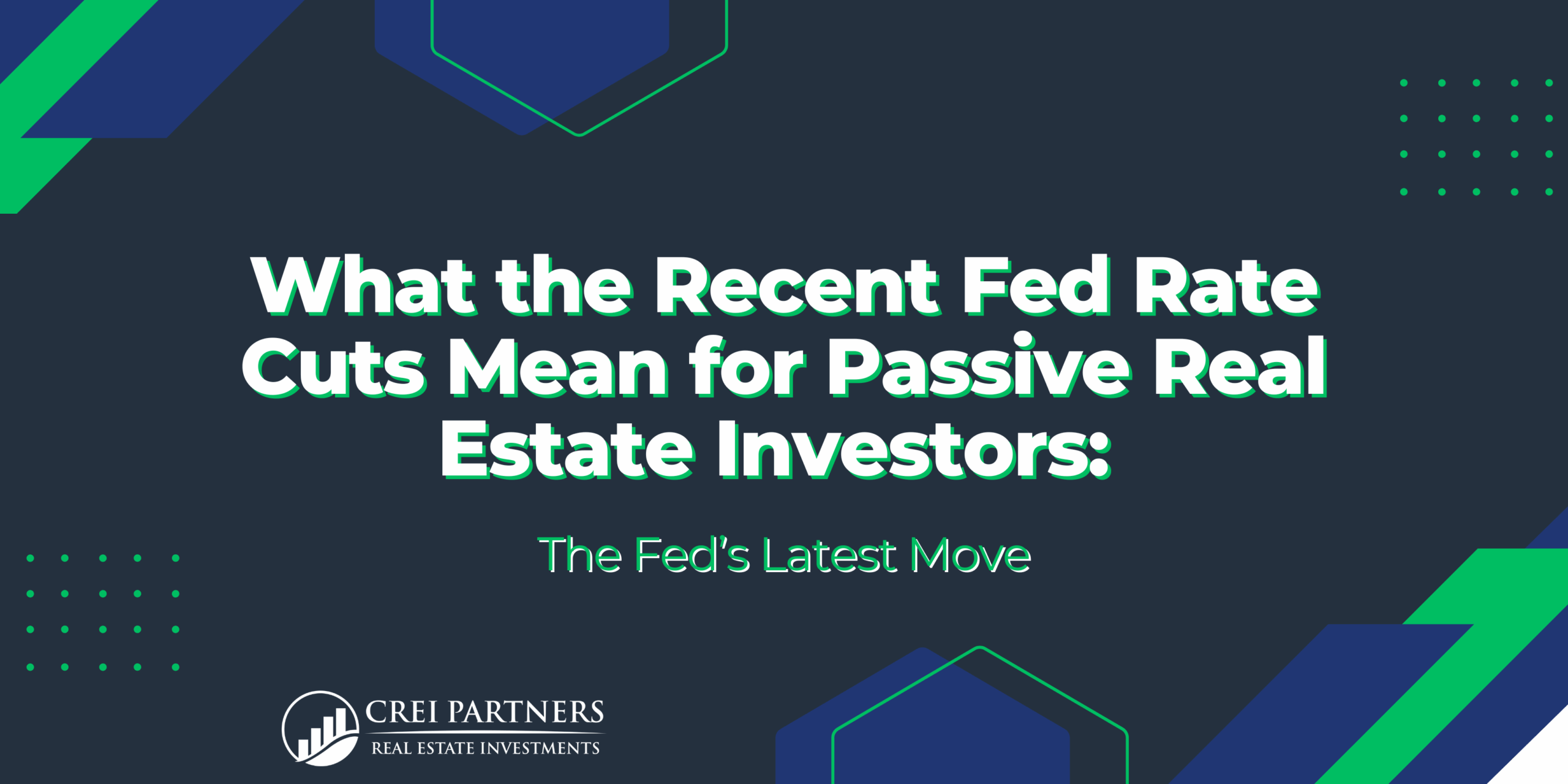On September 16, 2025, the Federal Reserve lowered the federal funds rate by 25 basis points (0.25%), shifting the benchmark rate to the 4.00%–4.25% range—the first cut since December 2024 (AP News).
While inflation is still above the 2% target, slowing job growth pushed the Fed to act. This signals the beginning of an easing cycle, with future cuts likely dependent on economic data.
For passive investors in commercial real estate syndications, this decision has important ripple effects.
How Fed Rate Cuts Affect Passive Real Estate Investors
1. Financing Gets Cheaper → More Room for Cash Flow
When sponsors refinance or secure acquisition loans at lower rates, the property’s debt service decreases. For LPs, this can mean:
- Better distributions in the short term, as more NOI drops to the bottom line instead of going to lenders.
- More resilient returns if debt terms improve mid-hold through a refinance.
2. Increased Investor Competition
Lower rates can make commercial real estate more attractive relative to other asset classes (like bonds or savings accounts). As more capital flows back into real estate, demand can push valuations higher.
- For LPs, this means your early entry into deals matters—because later deals may have tighter margins if purchase prices rise.
3. Cap Rate Compression
Cap rates typically move in the same direction as borrowing costs. When rates fall, investors are willing to pay more for income streams, which raises property values.
- For passive investors, this could translate into higher exit valuations at disposition—boosting equity multiples.
- But it also means new deals must be underwritten conservatively so sponsors don’t overpay.
4. Rental Market Dynamics
Even though Fed cuts don’t instantly lower mortgage rates, affordability challenges persist for many would-be homebuyers. This keeps renter demand strong, especially in high-growth markets like Texas.
- For LPs in multifamily syndications, this could mean steadier occupancy and rent growth, strengthening the fundamentals of your investment.
5. Risks for Passive Investors to Watch
- Inflation comeback risk: If inflation reaccelerates, the Fed could pause or reverse cuts, creating financing uncertainty.
- Sponsor discipline: Rate cuts may encourage aggressive acquisitions. Passive investors should look for sponsors (like CREI Partners) who stay conservative in underwriting, rather than chasing deals.
- Delayed trickle-down: Not all rate relief hits immediately. Mortgage and long-term loan rates depend more on 10-year Treasury yields than the Fed’s overnight rate.
CREI Partners’ Approach in a Rate-Cut Environment
At CREI Partners, our goal is to translate these macro shifts into real benefits for our investors:
- Disciplined underwriting → We don’t overpay just because capital is flowing back into the market.
- Value-add strategies → By improving operations and NOI, we create returns that don’t rely solely on cap rate movement.
- Texas focus → High-growth metros like Dallas, Austin, and San Antonio are well-positioned to benefit from both rate relief and continued population/job growth.
Investor Takeaway
The Fed’s recent rate cut is a positive signal for the real estate market, but for passive investors, the opportunity lies in:
- Partnering with experienced operators who use rate relief to strengthen deals—not chase risky ones.
- Looking for investments where cash flow and value-add improvements drive returns, not just cap rate movement.
- Staying disciplined, even as lower borrowing costs bring more players back to the market.
At CREI Partners, we believe now is the time for thoughtful, fundamentals-driven investing. Want to learn more about how we position our investors in shifting markets? Explore our Passive Investor Coaching Program or contact us today! shelbi@creipartners.com or by phone at (979) 895-4222


 Subscribe to our newsletter so you never miss out on new investment opportunities, podcasts, blogs, news and events.
Subscribe to our newsletter so you never miss out on new investment opportunities, podcasts, blogs, news and events.